List of lizards |
|---|
And again, fans who want to have lizards for the first time the same or similar questions are asked, whose answers are given here in principle, so there are no disappointments in lizard ownership or even loss among keepers, but also to indicate to the future caretaker in advance the work involved in keeping lizards. So, who cannot ensure continuous and conscientious care, even when they are absent, such as on vacation, they shouldn't get lizards.
Who wants to have lizards should not capture them under any circumstances, since the law prohibits taking animals from the wild without their permission.
The true and responsible animal lover will abide by this and not further harm native lizard populations in the wild., partially threatened, fucking them without permission.
Where can I get lizards?
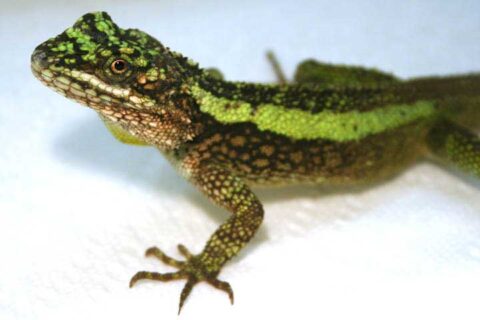
Rarely offered in pet stores, so you have to rely mainly on the offspring of other fanciers who offer them in association publications and often also on the Internet.
The Captive lizards usually offered as hatchlings or juveniles, unless a hobbyist liquidates his stock of old animals or sells any of them. When buying animals, it is important to ensure that the breeder or previous keeper has duly registered the lizards to be sold or their offspring with the competent authority. The buyer must receive a breeding document in the form of “certificate of origin”, in which the data of the animals offered are recorded, like his kind, size, hatching date, possibly the sex, as well as the address of the authority to which they were declared. This certificate of origin serves the buyer to report his animals later to the nature conservation authority responsible for him and thus demonstrate their legal acquisition..
Can I keep lizards in my garden?
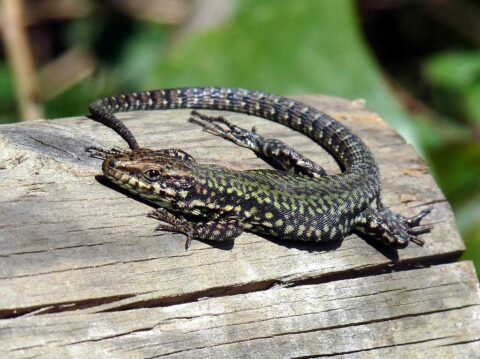
To more than a hobby gardener, inspired by articles in gardening magazines advising the creation of a small biotope with a pond, a dry stone wall and wild plants for endangered nature, can you help a bit and set up lizards here. This is reinforced by phrases like: “the pretty tree frog and the quick common wall lizard (Podarcis muralis) they tend to settle here early”.
But, it is not advisable to keep them in a garden, because it's not always easy, even for experts, evaluate the suitability of a habitat for the settlement of a species of lizard. Many factors come into play here, as the microclimatic conditions of the place, the food supply, pressure from enemies, for example, of cats, birds of prey and ravens, as well as shrews and other. The availability of suitable hibernation places is also important..
As a last resort, only large biotopes are suitable for settlement, since the animals do not remain in the place where they are released and desired, but they migrate after a more or less long time and are no longer seen. But, this should be so by next spring at the latest. It also, for the establishment of a species a large number of autochthonous animal material adapted to the future biotope is required, and in no case said material whose origin is uncertain or even unknown.
It is also important to note that, usually, the unauthorized release of animals is prohibited without the express permission of the authority responsible for nature conservation, since even animals released on the property itself can expand beyond its limits and, Therefore, displace or distort ancestral fauna.
How big should a lizard terrarium be??
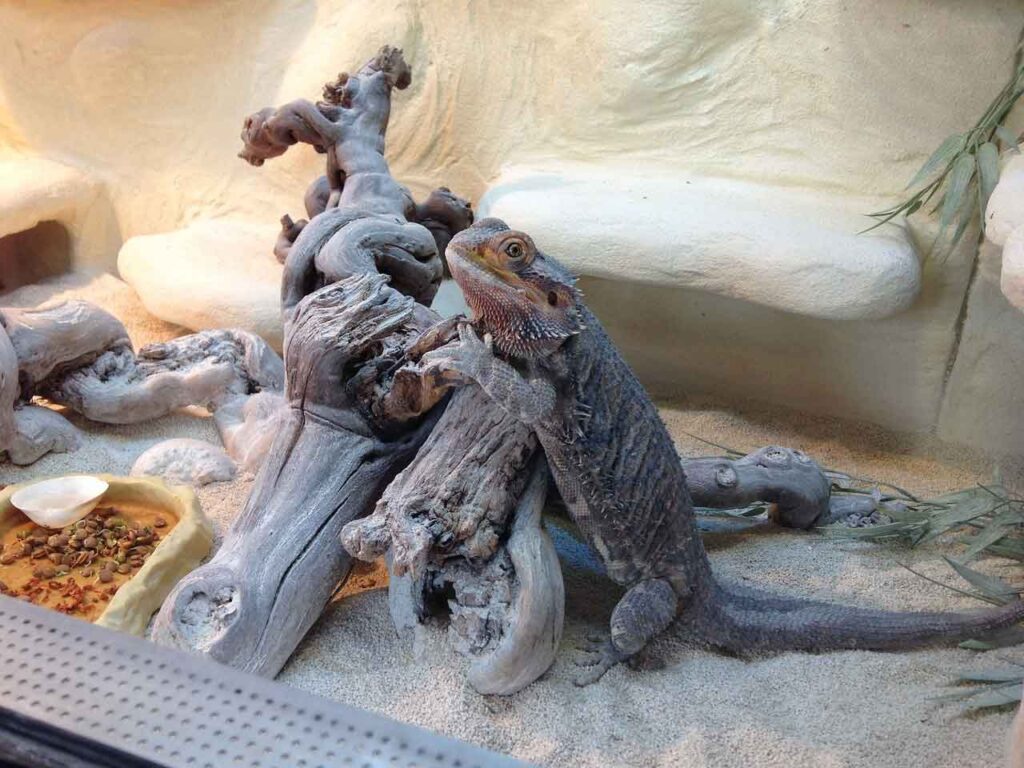
One terrarium for lizards can never be too big, but if the container must remain transportable, there are limits to the dimensions. The size of the container depends above all on the type of animals to be kept, its size and its number. Even with terrariums bigger, keep in mind that adult lizards, that they can't “stay out of sight” in the indoor terrarium, they can star in fierce bites during the mating season, especially the males, which can also cause mutual damage and, often, tail loss. It also, there are often fights over food.
It also, it is not always advisable to socialize large species with small ones. These may include, if feeding is inadequate and there is a significant difference in size between animals, in individual cases in a small space, cannibalism cannot be completely ruled out.
On the other hand, small species tend to get along better with large ones than animals of the same species with each other, since they are considered less territorial competitors. Often, after the mating season, former adversaries can be seen lying calmly side by side or even on top of each other in the sun.
It is necessary to trial and error and to have a spare enclosure if the animals prove to be incompatible. Smaller species or subadult animals are at a disadvantage when it comes to feeding, unless feeding is done by hand, animal by animal, with feeding tongs. So, when different species and specimens of the same species are kept, you have to consider if, for example, two smaller terrariums are no more suitable for housing animals than one large one.
These may include, a container with dimensions of approx. 100 x 50 x 50 cm. (length x widht x hight) is quite suitable for (1 male, 2 females) adult green lizards. The smaller species will get by with containers of approx. 70 x 50 x 45 cm..
For rearing a group of baby lizards, a container of approx. 50 x 30 x 30 cm.. it's enough, although exact dimensions for individual needs cannot be determined exactly, but they must be “experienced” by the hobbyist In the case of climbing species, as the wall lizards, keep in mind that the containers are designed to be taller, so that more vertical decoration can be accommodated, giving animals the opportunity to climb.
How should the terrarium be?
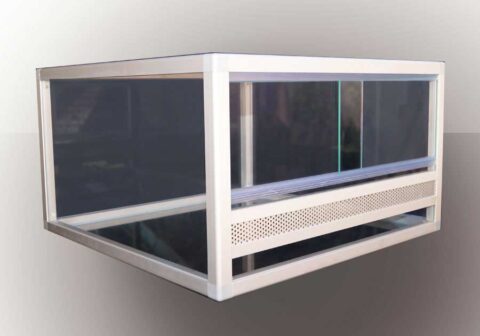
Today, specialized trade offers a large number of terrariums ready for use, many of which are silicone-bonded glass containers, also closed at the top, whose sides and tops sometimes have perforated plates embedded with holes of approximately 1,5 mm to ensure good cross ventilation, which should prevent harmful nitrogen stagnant air in the terrarium.
There's also terrariums of aluminum and plastic profiles. the front glass, or part of it, slides along a plastic or metal rail and can slide back and forth to open and close the terrarium. It is doubtful whether even the smallest live food can escape through the perforated plates provided for ventilation., as well as through sliding glass. This may have to be remedied by using a very fine fly line and sealing strips for the discs. But, a finer wire worsens the patency of the vent. So, probably better to breed the smaller lizards, who are the ones who need less food, in a separate compartment.
The small, inexpensive glass tanks sold as aquariums are also suitable for this purpose. As many animals that feed can climb the silicone glue in the corners and lizards cannot always be trusted, the edge of the tank should also be covered with a horizontal strip of glass 4 to 8 cm., corresponding to tank size, as an escape barrier. these aquariums, which of course do not have side ventilation, they are also generally used by some hobbyists to keep larger lizards; they are easily accessible to the caregiver from above for feeding and other handling without major inconvenience, since they usually do not have a lid. The illuminators, like the spotlights, can also be easily hung from above. But, if you also want to feed the flying insects, like wax worms, fruit flies, houseflies or plankton in the meadows, you'll need a terrarium closed.
Since it is not always possible to find all the desired components of a terrarium in the containers offered by the trade, it is also possible to build one yourself, which is not a big deal with the wide range of materials available in DIY stores today. The crystals, even used ones, can be cut to size by a glazier and glued with silicone. Indoor terrariums can be easily screwed and glued from wooden boards. The front part is formed by a glass. The interior of such a container still needs to be coated with a moisture-repellent paint.
On the internet there is literature for the self-construction of terrariums.
If you intend to place a container outside in the summer months, the front must be done, at least partially, wire mesh, so that the sun with its natural radiation can penetrate the animals. If it is difficult to install a sliding window in the front to open the container, access can be provided on the sides of the container or from the top by means of a hinged lid. A suitable cap is a metal frame filled with fly wire, whose support is glued with foam rubber for sealing. Lid can be opened with hinges, that can also be glued to the glass with silicone.
If he terrarium is installed outside, a rainwater drain must be created in advance on the ground or in the lowest part of the side walls using wire or perforated sheets. The terrarium it should be placed with a slight inclination towards this area and this area of ​​the interior should only be covered slightly with gravel or filter pad to prevent it from clogging.
If he terrarium is covered outside only when rain is imminent, it can quickly flood if the caretaker is absent and the weather changes suddenly.
Where should the terrarium be placed?
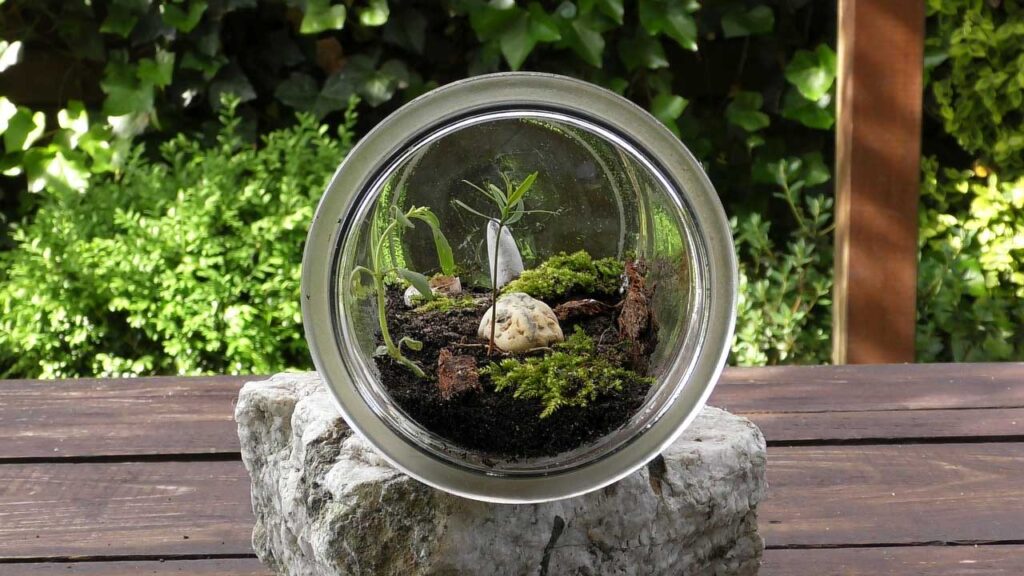
Of course, a bright place, for example next to a window that lets in sunlight at least part of the day, it is more suitable than a dark place that always has to be illuminated with artificial light. A window can also be opened to let fresh air into the terrarium.
Especially in the summer months, a balcony location, terrace or garden with direct sunlight is best for native lizards. If the place does not offer protection against rain and if no drainage possibility has been created in advance in the container, the terrarium should be covered with a lid that is not directly on top and that, Therefore, do not impede possible airflow through an existing wire cap. on hot days, it is essential that part of the container is in the shade to avoid overheating due to too intense sunlight.
How does the terrarium light up and heat?
The native lizards do not need additional heating, although they must hibernate with heat. The temperature of the room and the heat emitted by the installed spotlights are sufficient. The lights, spot mirror lamps with normal sockets between 60 and 150 watts, they are assembled in such a way that their cone falls on a stone slab or the like intended for “sun” animals. Lamps must be screwed into a ceramic socket due to the heat they generate.
Different species of lizards have different heat needs, that is to say, varies the “preferred temperature” to which they decide to expose their body under the spotlights to reach the “operating temperature” correct. So, the radiator hanging from above is initially placed at a distance of about 30 cm from the “tanning surface”. If the animals then remain directly under the light cone of the radiator for a longer period of time, the temperature below will tell them that they like it. But, if kept at a distance from the focus, radiating heat is too high. Next, you have to test the proper distance. HQI and HQL lamps are also suitable for this purpose.
Many hobbyists also equip their containers with basic lighting using daylight fluorescent lamps.. The specialized trade recommends special tubes for reptiles, especially for the rearing of young animals, which must be very close to natural sunlight in their radiation and also emit UVA/UVB radiation. With the help of this radiation, reptiles synthesize vitamin D in their skin 3, important for calcium metabolism and bone formation. The effective range of some of these lamps does not usually exceed 35 cm.. So, the lamp must not be mounted under the cover in the terrariums Taller, but must be mounted at the distance mentioned above. The effect of the lights disappears after half a year of operation.
There are also AVA/UVB bulbs (for example, Sanolux) that can be screwed into a normal lamp holder. But, these lamps emit too much UVA radiation for continuous exposure, Therefore, they can only be used at the intervals recommended by the manufacturer., approximately 10 to 15 minutes each time. If animals are kept exclusively indoors, no natural sunlight, you should consider purchasing these tubes or fluorescent lamps.
How to set up a terrarium for native lizards?
Some hobbyists prefer a more or less sterile mount of the terrarium, but one that meets the basic needs of animals and is easy to keep clean. A layer of sand as a substrate, a potted houseplant, a branch to climb, a stone slab to sunbathe and as a shelter at night complete the furniture, along with a small shallow water bowl embedded in the substrate. But, if the lizards are also going to breed in terrariums set up in this way, a substrate should be placed in a corner that is always slightly moist, where lizards can bury their eggs. This substrate can also be offered in a removable container. Small terrariums for breeding and young animals should also be arranged simply, clear and practical for good animal control.
But, if for aesthetic reasons you want to design the furniture as a terrarium the biotopo, in which a part of the respective habitat of the animals is reproduced, there are no limits to your imagination, at least when it comes to furnishing large terrariums. This design is part of the charm of terraristic. On the sand as a substrate, branches can be used, trunks, barks, stones, foliage and plants to create a natural looking decoration. In the trade you can also find back walls of decorative cork and coconut fibers, as well as light rock imitations.
To keep the Sand lizard (Lacerta agilis), you can recreate a section of a heather landscape with individual patches of light heather sand and a few small miniature pine or juniper trees and a gnarled root. If the growth is too lush, it will be necessary to intervene later with scissors. Of course, live plants also need to be watered from time to time. To replace the morning dew, can be sprayed in the morning on warm days.
In a terrarium installed outside, lizards must have a shelter under roots or stones, under which the substrate remains moist. This is where the animals take refuge from the extreme heat of midsummer. This is because lizards can also die as a result of overheating..
The stone slabs should rest on the walls of the terrarium without gaps or be at a suitable distance from them so that the lizards cannot accidentally get trapped. Also be careful with larger stones or logs placed on the ground. If your position accidentally changes, animals can also get trapped under them and die. It also, decorations should not reach so high in open containers that animals, for example agile wall lizards, can jump.
What to look for when buying lizards?
Lizards are affected by various diseases, many of which are barely recognizable from the outside. So, the future lover must make sure that the animals he is going to buy make a vivid impression and do not stand still. They should not appear gaunt and emaciated, they must not have their eyes glued, they must not show cripples. On the other hand, a regenerated tail in the terrarium is only an aesthetic deterioration. If the animals even eat in the presence of the future lover, is usually a clear indication of your health.
If you want to breed later, you can try to get non-breeding animals, although the consequences of inbreeding have rarely been known, even after several generations of terrariums. As a last resort, the animals must all come from the same region and not belong to different subspecies, to avoid possible bastardies in subsequent breeding. When you buy young animals you have to buy some 5 or 6 specimens to be sure that both sexes will be available for subsequent breeding, especially since it is not always possible to raise animals without loss. If the animals are about the same size, the smaller ones will not be harmed by the larger ones when hunting for food.
for the lizards, even when food is plentiful, “what the other eats is always the best”. You should also make sure that you don't keep any “secret”. These are animals that grow considerably slower than their siblings of the same age and that, often, do not fully recover later. In order to distinguish the sexes of each species, it is necessary to consult the appropriate bibliography or resort to the image archives of the web page of the interest groups.
What are lizards fed??
Anyone who has had the opportunity to observe lizards foraging for food in the wild, watching them catch small animals of all kinds here and there, you can imagine how varied the natural food supply is. It is difficult to offer animals such a variety of food when they are kept in a terrarium.
The pet trade offers numerous foods grown, especially through internet sites, like crickets, domestic crickets, grasshopper, mealworms of various sizes, wax worms, fly maggots, caterpillars, cockroaches, etc. For emergencies, crickets are even boiled. For emergencies, crickets are offered even cooked and frozen. Many keepers offer their lizards only this food or even just a part of this food assortment and, Obviously, keep animals healthy and able to reproduce for many years. As such, commercially available multivitamins are also fed (for example, Reptovit) and calcium preparations for reptiles, added to drinking water or sprinkled on food animals from time to time. Next, lizards are given individually with feeding tongs or thrown. Dead food given this way is also accepted.
Some lizards occasionally reject powdered food because of its smell.. Of course, all food of animals that cannot escape can also be given directly in the terrarium in larger quantities. The lizards will hunt them there when needed. But, the often nocturnal lifestyle of some crickets is a disadvantage here.
If all purchased food animals are not fed immediately, but they are kept until they are needed, these food animals must also be fed. Remember that you feed the lizards with what the feeders have eaten. Crickets can be fed very well with aquarium fish food (como Tetramin).
The animals' water needs can be met with a damp cloth or apple and pear slices, among other things. Mealworms can be fed on all types of cereal products. They also feed on the mentioned fruit to cover their moisture needs.. Migratory locusts feed on fresh, non-pulverized grasses.
If you feed lizards with crickets, for example, that are delivered with tweezers, often pull away after eating several of these foods and close their eyes as more of the same type of food is presented. This is an indication that they do not want to continue eating this food.. But, if they are offered other types of food, like wax worms, they will continue to accept it willingly. Some foods are sometimes accepted, but other times not. The “like” of each individual is also very different. But, care must be taken not to overfeed animals by unilaterally stuffing them with large amounts of, for example, meal worms.
Possible deficiency symptoms due to unilateral feeding after a long maintenance period do not always have to become visible. Just as color faults are known in cage-rearing of some other animal species, that can only be avoided with the supplementation of artificial colors. So, it is quite conceivable that, when keeping lizards in terrariums for several generations and with unilateral feeding, deficiency symptoms of various kinds occur that are not immediately perceptible to the naked eye.
So, natural food, collected outdoors and fed at least partially or additionally, still the best food for lizards. with this food, fresh green leafy vegetables or even pollen from flower visitors are additionally included for the diet of lizards.
Among the great number of these food animals, noteworthy are the following: grasshopper, spiders, weavers, isopods, centipede, beetles, larvae, earwigs, flies, snails and worms. Prairie plankton can be collected using a larger plastic funnel with a plastic bag taped to the outlet and held under bushes and brush while shaking or brushing through weeds. Avoid busy roadsides and proximity to pesticide-treated farmland. to catch flies, baited traps can be placed in which hundreds of flies can be caught per day.
Newly hatched lizard pups can only cope with the smallest food and are fed the smaller commercial foods mentioned above, such as micro crickets and buffalo worms, or better with small prairie plankton, which green aphids are particularly suitable for. But, there are also small animals in the prairie plankton that are despised by the lizards due to their bad taste.
Of course, to save costs, many of the expensive food animals can be raised. Literature
for this it is also commercially available. But, in addition to lizard breeding, raising animals for food is another time-consuming hobby.
How can I breed lizards?
As such, the hobbyist can initially do no more than keep and care for his animals according to the rules mentioned so far and hibernate them, as further described below. In the end, winter is also part of the life cycle of our native lizards. with this baby, success will not be lacking and sexually mature animals will proceed to mate in the spring and lay eggs later.
In the wild, egg laying takes place between May and June, depending on the species. The pregnancy of the females is recognized early by its rounded shape. Shortly before laying the eggs, animals often walk restlessly from one side of the terrarium to the other and try to dig in different places. Later, they dig a small burrow of about 10-15 cm deep in loose soil, sandy and slightly moist, which must be firm enough not to collapse. Here they stand between 5 and 20 eggs. Next, come out of the cave, after the entrance has been closed with a scratch. So, at least one place in the terrarium must have soil conditions suitable for laying eggs, for example, a mixture of pit sand and slightly moist oatmeal.
If the terrarium is in a warm room, laid eggs can be left alone and hatching of the young can be expected after a few 30-40 days – sand lizard (Lacerta agilis). Even in a terrarium installed outdoors in summer, the young of most species are born successfully. The area where the eggs are laid should always be kept slightly moist., but never wet. The hatching process can be favored by placing a spotlight on the spawning area, which warms the ground surface to about 25 degrees during the day in case of bad weather. The mountain or forest lizard does not need to be offered the opportunity to lay eggs, since it is usually “viviparous”.
To avoid all risks, especially with species and eggs that require more heat, many hobbyists remove the egg clutches immediately after they have been laid, what is recognized by the female, now clearly thinner. They dig up the eggs and transfer them to a breeding container. Digging up the brood carefully, the eggs should not be damaged. Eggs that may have stuck together do not separate. They should be marked in their original position with a pencil at the top so that they can be placed in the same position in the incubator without contact.. A change in position is said to cause damage to the egg or, in the case of a later extraction, in the embryo, so the subsequent hatching of all hatchlings is in question.
In some cases, However, several times can healthy hatchlings from almost all eggs, even of those eggs of different stages, whose position changed completely after finding them. So, even if the eggs are found by chance, for example when cleaning a terrarium, and changed its position, you have to try to incubate them.
The incubation vessel it is a flat plastic box, like those sold in domestic stores, which is filled with slightly moist sand that has been sterilized by boiling or heating. Small depressions are made in the sand with a finger, in which individual eggs are placed with the marked side up. The eggs rest on the surface and are not covered. The “vermiculita”, which is very suitable, it is also available in pet stores and can be used as a breeding substrate instead of the sand described.
The plastic box containing the eggs should be tightly closed with a fly wire lid or similar., so that the pups, that then are born without being seen, they cannot escape in any case and fall into the water. A small glass aquarium filled with water to a height of about 10 cm serves as an incubator and two bricks are placed on the edge, right up to the surface of the water.
Place the plastic box with the eggs on these bricks. A small thermostatically controlled aquarium heater is now suspended in the aquarium water, that fits some 25 degrees and works in day and night mode during the entire incubation period.
Water temperature and level must be kept under control. The aquarium is covered with glass so that a small hole is left open for ventilation.. To prevent the sweat that drips from this lid from falling on the eggs, a glass is also placed inside the aquarium, in angle, above the plastic box with the eggs, that drains the water that drips from the lid down. after sunset, the eggs increase in size by absorbing moisture; if hatching is imminent, they will collapse a little. Rotten or moldy eggs are removed immediately.
If all this is too much trouble for you and you have a large number of lizards and want to hatch eggs often, I should buy, for example, the “artificial incubator” offered by pet stores or similar devices with which a large number of eggs can be incubated at the same time and with precise automatic temperature control. The hatched pups should be moved to a small terrarium immediately after hatching., since it cannot be ruled out that adult animals or even parents chase them.
How do you treat sick lizards??
Only some of the diseases that appear in lizards can be correctly recognized and successfully treated by the hobbyist from their symptoms.. The surest way to avoid disease is to keep them in a species-appropriate manner.. Newly acquired animals should not be immediately socialized with those that have been around for a long time..
First of all, they should be observed in a quarantine terrarium for a few weeks and only then socialized with the other animals if they show no signs of illness. Hygiene must be observed in terrariums, occasionally clean dirty decor, like stones, tree bark, etc., and replace the substrate.
Diseases include rickets due to vitamin deficiency, external parasites such as mites and ticks, and intestinal parasites such as worms.
Colds can also occur if animals are suddenly kept too cool. Occasionally, sticky eyes are also seen as a result of bacterial infection.
Worm infestations can be treated with deworming medications, and bacterial infections with antibiotics.
If required, consult a reference book or an expert.
How, where and at what temperature should native lizards winter?
Cold winters also take a heavy but natural toll among lizards in the wild.. This is especially true in the case of young animals born in the same year and even more so in the case of animals hatched very late from their eggs..
Thus, many fanciers are of the opinion that it is better and less risky to keep young animals in a warm environment during the first winter. Then, the lizards are already well grown next spring, and often the sexes can already be distinguished. But, In between, a kind of pseudo-hibernation can be introduced for a few weeks.. In this case, after stopping feeding, the temperature is lowered by turning off the radiators and the lights, the heaters in the room are turned off and, If it is possible, the room is ventilated. The animals then remain inactive in their shelters, just like they do outside during periods of bad weather. If these conditions are not met, you can also move the terrarium to a cooler room. But, temperatures should not drop as low as during normal hibernation, which is why 10-15 degrees should be enough.
If you have your adult lizards in an indoor terrarium and you want to hibernate them there, you must previously add a suitable substrate, like sand, forest land, some foliage and a mossy cover, while the animals are still active, so they can hide there after. Towards the end of October, You have to lower the temperatures little by little., dim the lighting and shorten it with a timer according to the natural length of the day. The feeding of the animals should be completely stopped about two weeks before, as lizards should not go into hibernation on a full stomach.
After this time, the terrarium should be placed in a cooler place, that is to say, in a cool basement or similar room. If the animals have not hibernated by then, should continue to be kept in dim light during the day. The hibernation substrate must never be completely dry, but not wet either. Touching the substrate with your finger from time to time allows you to check the level of humidity. Once the animals have settled in their shelter, temperatures can drop to +3 degrees without harming them.
The end of hibernation is around February/March. If the animals come out of hiding before the end of hibernation, when temperatures are still low, is not usually a good sign and may indicate a disease. Next, you can try to keep them warm.
It is a big mistake to dig up animals that have already taken up their hiding place for hibernation in order to place them in a “most suitable hibernation place” or move them from a terrarium that has spent the summer to a hibernation container in October. Then, the animals run from one side to another and, often, do not seek any shelter, which means that your energy reserves, which should be fed in winter, run out prematurely.
Many problems can be saved with lower temperatures, etc., if the container is placed outside in the summer and left there for the time being. Due to shorter day length and temperature difference, animals will stop feeding there and instinctively crawl to hibernate at the right time without any intervention. The transportable terrarium only has to be moved to a cold place, but frost free.
When the new year of the lizards begins in spring, you can slowly warm the animals back up and then turn on the lighting and spotlights. You can also take the animals outside on sunny days, but you must put them back at night, whenever there is a risk of night frosts, or at least cover them during light night frosts. For the transition period, additional installation of a heater is also possible. Young animals kept warm during the first winter should not be brought outside too early., but only when the adapted temperatures prevail there, since otherwise they will temporarily dig there in anticipation of a coming winter. This also applies to adult animals that have been hibernated in the refrigerator., for example, only until february.
Many lizard keepers who do not have the possibility to install the terrarium outside or who want a more controlled hibernation for their animals, successfully hibernate their lizards in the fridge. In this case, animals, they haven't been fed before, are placed in pairs in plastic boxes of approximately 20 x 20 x 10 cm., through whose perforations in the lid it is possible to exchange air.
Since refrigerators are moisture eaters by design, the animals should be placed in the containers on moist sand that has previously been made sterile by heating. instead of sand, a damp sponge can also be placed in the containers. Temperatures in the refrigerator can vary between + 2 and + 6 degrees. Approximately every four weeks you have to moisten the sand a little. A container filled with water placed in the refrigerator should increase the humidity of the refrigerator.. Hibernating animals should be checked from time to time and the refrigerator should be opened from time to time for better air exchange..
If you keep the lizards in the conditions described above, success will not be denied, not even in the brood.
Glass Terrarium Video
List of lizards for keeping in captivity
1 Agamid Lizards
Red-headed rock agama – Jason Pratt, CC BY 2.0, via Wikimedia Commons
The Agamid Lizards are found in Europe, Africa, Asia
... Read more
2 Green anole
... Read more
3 Carpet chameleon
... Read more
4 Von Höhnel's chameleon
5 Four-horned chameleon
... Read more
6 Montane side-striped chameleon
... Read more
7 Fischer's chameleon
... Read more
8 Jackson's chameleon
... Read more
9 Meller's chameleon
10 Senegal chameleon
Chamaeleo senegalensis in Acacia
... Read more
11 Veiled chameleon
... Read more
12 Malagasy giant chameleon
13 Panther chameleon
Panther chameleon – David.Monniaux, CC BY-SA ... Read more
14 Brygoo's chameleon
... Read more
15 Chameleons
16 Common chuckwalla
17 Egyptian spiny-tailed lizard
Egyptian spiny-tailed lizard –
... Read more
18 Ocellated spinytail
... Read more
19 Ornate mastigure
... Read more
20 Oriental garden lizard
... Read more
21 Bearded dragons
At present they are known 8 species bearded dragons (Drive), of which two species are commonly bred in captivity: The
... Read more
22 Mountain horned dragon
... Read more
23 Chinese water dragon
The Chinese water dragon the green (Physignathus cocincinus) lives in the rainforests of Southeast Asia, preferably near masses of
... Read more
24 Green striped tree dragon
... Read more
25 African five-lined skink
Nice small lizard of the family of the escindidos. As you can see, full of the stripes that give it its name.
... Read more
26 Bronze grass skink
Beautiful skink from Indonesia with a robust appearance and with colors that make it look metallic. Maintenance is exactly the same as
... Read more
27 Red-eyed crocodile skink
Precious and very rare Indonesian lizard that nowadays is very difficult to find. It likes humid places so
... Read more
28 Indonesian blue-tongued skink
awesome lizards. This species is one of the best to keep as it is one of the calmest and most manageable. very easy animals,
... Read more
29 Common blue-tongued skink
Its coloration ranges from gray to brown with perpendicular dark bands. reaches 60 cm in length and its is a species
... Read more
30 Pink-tongued skink
31 Peters's banded skink
Very rare and very little seen niger skink. It is an animal of terrestrial customs and dry areas, desert
... Read more
32 East Indian brown mabuya
Another species of this genus so docile and friendly from Southeast Asia. They are just as easy to maintain as the others. It suits
... Read more
33 Schneider's skink
The great skink North Africa and one of the most beautiful we can find, since the orange colors that
... Read more
34 Oaxacan spinytail iguana
... Read more
35 Electric blue gecko
... Read more
36 Crested gecko
The “Crested gecko” in captivity it is docile and tolerates regular handling – Jazium, CC BY-SA 4.0, via Wikimedia
... Read more
37 Rough-tailed gecko
... Read more
38 Thick-tailed gecko
... Read more
39 Madagascar day gecko
... Read more
40 Gold dust day gecko
... Read more
41 Golden gecko
... Read more
42 Dwarf yellow-headed gecko
One “Dwarf yellow-headed gecko”. Lygodactylus
... Read more
43 Cameroon dwarf gecko
... Read more
44 Cat gecko
... Read more
45 Leopard gecko
46 Common wonder gecko
... Read more
47 Lined gecko
... Read more
48 Marbled gecko
... Read more
49 Geckos – A fascinating lizard
Gekko gecko – Robert Michniewicz, CC BY-SA 3.0, via Wikimedia Commons
Geckos – a brief profileThe Geckos are, without a doubt,
... Read more
50 Blue iguana
... Read more
51 Lau banded iguana
... Read more
52 Cuban iguana
... Read more
53 Angel Island chuckwalla
... Read more
54 Western spiny-tailed iguana
... Read more
55 Black iguana
... Read more
56 Rhinoceros iguana
... Read more
57 Green iguana
... Read more
58 Pet Iguanas
Lau banded iguana (Brachylophus fasciatus) – H. Zell, CC BY-SA 3.0, via Wikimedia Commons
Due to its requirements
... Read more
59 North African mastigure
... Read more
60 Saharan spiny-tailed lizard
... Read more
61 Red-headed rock agama
... Read more
62 Sudan plated lizard
... Read more
63 Spiny-tailed lizards
... Read more
64 Mediterranean house gecko
... Read more
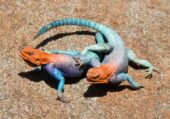
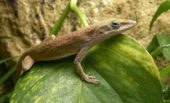



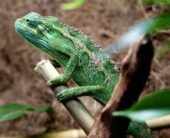
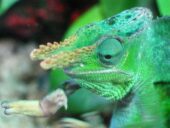
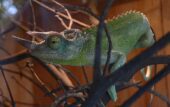

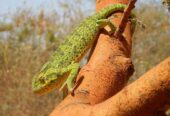
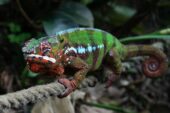
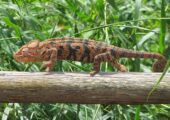
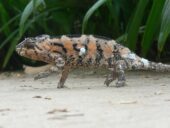

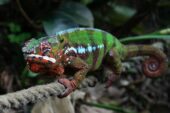
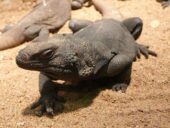
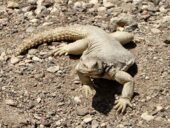
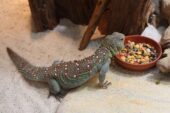
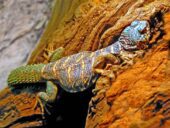
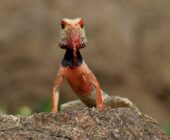
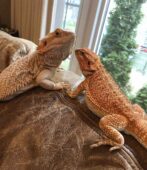
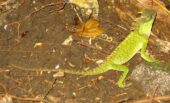
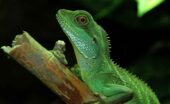

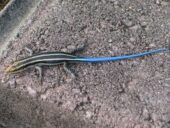
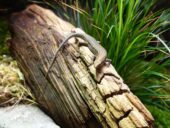
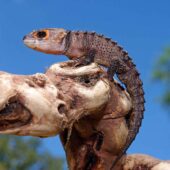
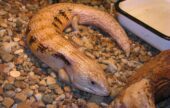

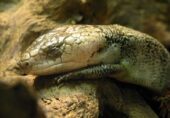
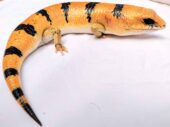
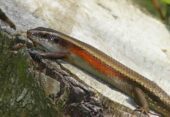
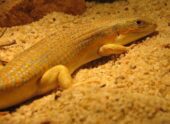
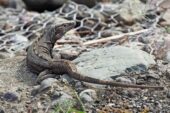
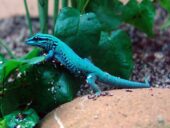
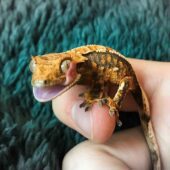
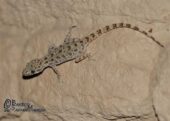
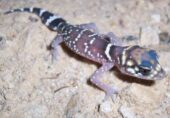


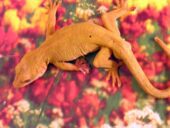

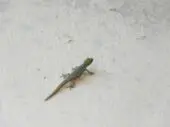
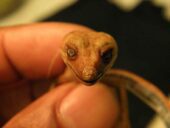
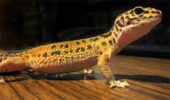

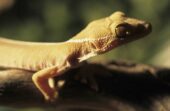

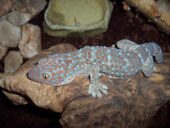
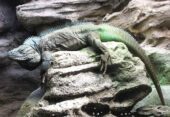
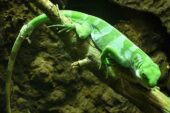

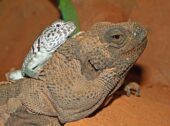
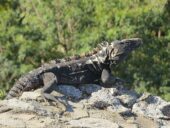
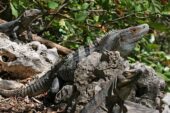
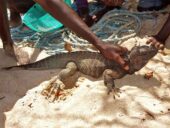
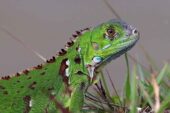
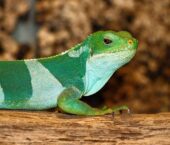
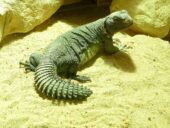
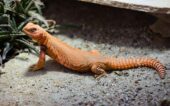
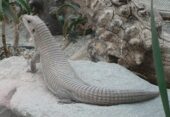
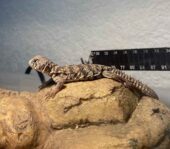
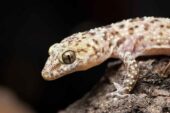

A question, if I'm going to leave kitchen paper as a substrate, I have to leave it as it is or I cut it into strips???